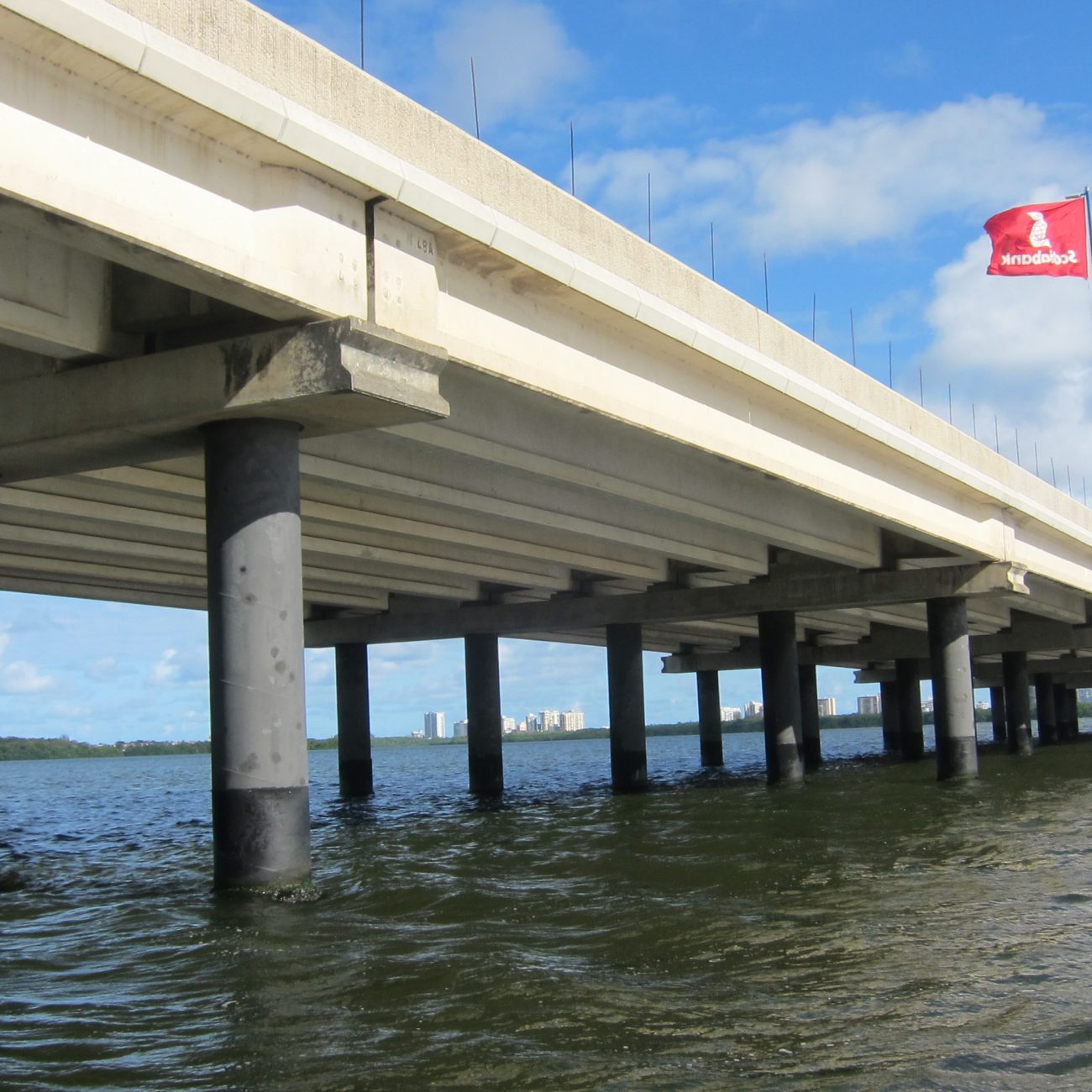The Teodoro Moscoso Bridge provides access to the Luis Muñoz Marín International Airport, the most important airport in the Caribbean, both in terms of passenger and cargo movement. It has a length of 2,250m. Of the total length, 2,075m run over the waters of the San José lagoon, 75m over mangroves and the rest over roads bordering the lagoon. In order to evaluate the current condition of the bridge, a systematic methodology was used to get to know the bridge in as much detail as possible. We begin with a review of the existing documentation: construction plans, existing technical reports and traffic data, weather conditions, etc.
The following studies were carried out:

Tu privacidad es importante
Nosotros y nuestros partners usamos cookies para personalizar el contenido y pueden recopilar información no confidencial. Para más información visita las Condiciones de uso.